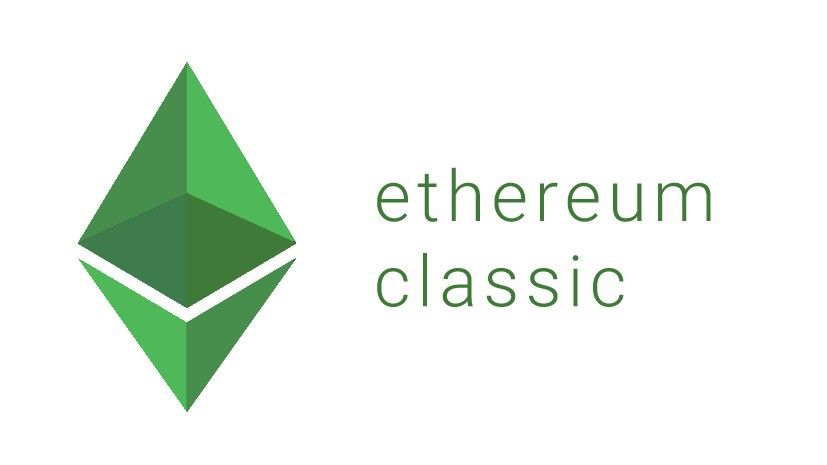How Can You Use Ethereum To Generate Passive Income?
Extreme cryptocurrency market fluctuations may be beneficial and harmful for investors and traders. Volatility creates opportunities for profits, but it may also result in losses. However, might use passive income strategies to mitigate these losses. During periods of market volatility, passive income opportunities allow Ethereum investors and traders to reduce losses.
Even under challenging market conditions, such as bear markets, passive income schemes allow investors and traders to produce revenue. For investors in Ether (ETH $1,620) or any other cryptocurrency, passive crypto income is a way to weather market drops and collapses. In the past, owning crypto assets was the primary income source. Due to the rise of decentralized finance (DeFi) protocols, there are presently several ways to promote interest in Ether and decentralized finance (DeFi) protocols. This article is a guide for both novices and seasoned pros on how to create income using Ethereum.
How does Ethereum function? What is Ethereum?
Ethereum is a decentralized blockchain-based network that performs intelligent contracts. Ether, Ethereum’s primary currency, allows users to undertake a wide range of functions on the web, including transactions, Staking, trading, storing nonfungible tokens (NFTs), playing games, and more. There is no possibility of fraud or meddling by a third party since these applications run as intended. Ethereum is also used to construct open-source blockchain-based decentralized applications (DApps). On Ethereum’s network, anybody with the required skills and experience may build decentralized applications, making it one of the most popular platforms for developers. Historically, Ethereum’s consensus mechanism was based on proof-of-work (PoW), which paid miners for verifying transaction blocks. At 1:42:42 a.m. EST on September 15, 2022, Ethereum switched to the proof-of-stake (PoS) consensus method.
Vitalik Buterin, co-creator of Ethereum, referred to the historic transfer as The Merge and defined it as the first phase of a multi-year scaling strategy. The switch to PoS is intended to make Ethereum more scalable and energy-efficient by eliminating the need for miners, who use a great deal of energy to defend the network.
How can you use Ethereum to generate passive income?
Here are some of the most popular passive income ideas for Ethereum:
Imagine scrolling past this opportunity! @ProjectX_BSC Has the best passive income! #Eth #nft #NFTGiveways #community #Staking #Doxxed 👇👇👇👇👇👇👇👇👇👇👇👇👇 pic.twitter.com/BmJleIIky0
— Quik (@QuikDefine) October 22, 2022
Staking
It locks funds on a Proof-of-Stake (PoS) blockchain (such as Ethereum) to validate transactions and earn rewards. Speculators are compensated for their work with ETH or other coins. When users stake their ETH, they contribute to the network’s security by putting their money where their mouth is.
Staking Ethereum is a popular technique for generating passive income from cryptocurrencies, but it may be prohibitively expensive for new investors. To run a validator node and participate in Staking, the new PoS version of Ethereum requires a minimum of 32 ETH, or around $55,000. In addition to direct wagering, you may use service providers such as StakeWise and Lido. These decentralized apps (DApps) provide Ethereum staking services without needing network participants to maintain a full node, allowing them to stake with less capital. These companies often charge a 10% fee on incentives, which may diminish one’s revenue, but initially, they are optional to deposit 32 ETH.
Also read: How Will Ethereum Merge Effect The Crypto Market?
Hodl
Hodl, a derivative of “hold” that means “hang on for dear life,” is crypto slang, meaning holding bitcoin for long-term financial objectives. When investors hodl Ether, they bet its price will increase in the future, letting them sell it for a profit. It is one of the most straightforward and prevalent ways to get passive income from cryptocurrencies. This strategy does not provide quick or assured gains, but it may be profitable in the long run if the price of Ether rises. Given that Ethereum has had tremendous growth since its inception and is now one of the most valuable cryptocurrencies in the world, it is probable that its price will continue to rise in the foreseeable future.
However, it is crucial to keep in mind that the prices of cryptocurrencies are volatile and vulnerable to rapid swings. Consequently, investors should only spend as much as they are ready to lose.
Electronic trading
Using a bot for automated Ether trading is a different method for generating passive income from Ethereum investments. Automated trading bots are computer programs that employ pre-programmed algorithms to buy and sell bitcoin 24 hours a day, seven days a week, on cryptocurrency exchanges. May configure these bots to execute trades automatically in response to market conditions such as price or volume swings. Coinrule and Bitsgap are examples of automated trading software allowing users to construct trading rules using established templates or modifying them based on risk choices.
If successful, automated trading may offer a steady revenue stream, but inherent risks are involved. Bots can make mistakes, such as selling or acquiring too early or too late. In addition, the bitcoin market is volatile and vulnerable to sudden movements that a bot may need help anticipating. Consequently, investors must routinely monitor their automated trading activity to avoid incurring substantial losses.
Lending
Lending is another frequent way for investors to get passive income from their ETH holdings. Typically, investors profit by lending borrowers cryptocurrencies at a high-interest rate which may be accomplished using either centralized or decentralized lending networks. Users often do not need to worry about technical issues such as centralized systems’ security, data storage, bandwidth utilization, and authentication. The platform handles all technological factors and maximizes customer return on investment. Typically, centralized systems have higher interest rates than decentralized ones. Nevertheless, centralized systems are more susceptible to hacking and data breaches.
Decentralized lending systems, on the other hand, offer clients a higher level of security, transparency, and customization, allowing skilled investors to improve their profit margins by modifying parameters. Frequently, these systems are more complicated to run and need a higher level of technical expertise. Moreover, loan rates are often lower under decentralized systems.
Liquidity mining
Creating passive income from Ethereum is also possible via liquidity mining or yield farming. By lending Ether or other assets to liquidity pools on decentralized exchanges such as Yearn.finance, SushiSwap, and Uniswap users receive rewards. In several yield farming systems, exchanging one token for another is possible inside a liquidity pool. Traders of cryptocurrencies pay a charge, which is then allocated to the farmers who have contributed to the liquidity pool. The size of the prize depends on the farmer’s contribution to the liquidity of the whole collection. Yield farming is a relatively young profession, and it is adaptable. Furthermore, it may be a risky investment since the underlying assets’ values may fluctuate rapidly, resulting in losses.
Stay informed with daily updates from Blockchain Magazine on Google News. Click here to follow us and mark as favorite: [Blockchain Magazine on Google News].
Get Blockchain Insights In Inbox
Stay ahead of the curve with expert analysis and market updates.
latest from tech
Disclaimer: Any post shared by a third-party agency are sponsored and Blockchain Magazine has no views on any such posts. The views and opinions expressed in this post are those of the clients and do not necessarily reflect the official policy or position of Blockchain Magazine. The information provided in this post is for informational purposes only and should not be considered as financial, investment, or professional advice. Blockchain Magazine does not endorse or promote any specific products, services, or companies mentioned in this posts. Readers are encouraged to conduct their own research and consult with a qualified professional before making any financial decisions. The featured image used is just a creative depiction of the title and it does not intend to hurt sentiments of any person or institution. If it hurts anyone sentiments, please do not hesitate to reach out to Blockchain Magazine.

 Bitcoin
Bitcoin  Ethereum
Ethereum  XRP
XRP  Tether
Tether  Solana
Solana  Dogecoin
Dogecoin  USDC
USDC  Cardano
Cardano  Lido Staked Ether
Lido Staked Ether  TRON
TRON  Chainlink
Chainlink  Avalanche
Avalanche  Sui
Sui  Wrapped stETH
Wrapped stETH  Wrapped Bitcoin
Wrapped Bitcoin  Toncoin
Toncoin  Stellar
Stellar  Hedera
Hedera  Shiba Inu
Shiba Inu  Polkadot
Polkadot  WETH
WETH  LEO Token
LEO Token  Litecoin
Litecoin  Bitcoin Cash
Bitcoin Cash  Hyperliquid
Hyperliquid  Bitget Token
Bitget Token  Uniswap
Uniswap  Official Trump
Official Trump  USDS
USDS  Wrapped eETH
Wrapped eETH  Pepe
Pepe  NEAR Protocol
NEAR Protocol  Ethena USDe
Ethena USDe  Aave
Aave  Aptos
Aptos  Internet Computer
Internet Computer  Ondo
Ondo  WhiteBIT Coin
WhiteBIT Coin  Monero
Monero  Ethereum Classic
Ethereum Classic  Cronos
Cronos  Mantle
Mantle  POL (ex-MATIC)
POL (ex-MATIC)  Render
Render  Dai
Dai  Algorand
Algorand  MANTRA
MANTRA  OKB
OKB 




